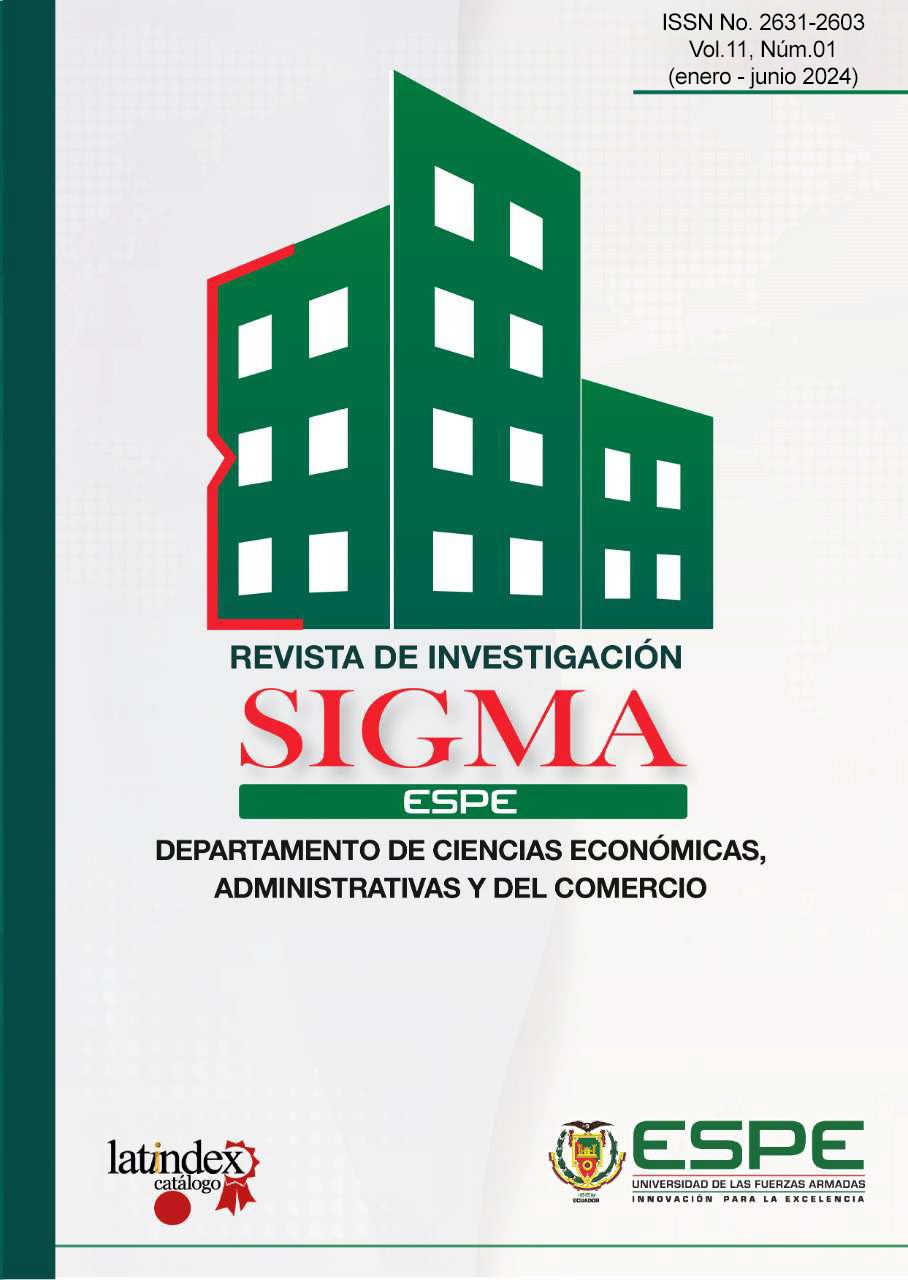Modelos de Predicción de Fragilidad Empresarial: Una Herramienta para Detectar la Bancarrota
Main Article Content
Abstract
El objetivo de este artículo de revisión es fundamentar la teoría de los modelos de predicción de fragilidad empresarial utilizados para la detección del riesgo de bancarrota. En donde, una vez detallado los diversos estudios literarios en materia de riesgos se logró identificar los métodos que poseen una mayor relevancia, confiabilidad y validez, los cuales surgen a raíz de varios episodios de inestabilidad y secuelas de crisis económicas-financieras. La metodología de investigación posee un enfoque mixto caracterizado por el uso de variables cuantitativas y cualitativas, que ayudan a entender el fenómeno de estudio y por el tipo de investigación tiene un nivel explicativo. Así mismo, se aplica el método de investigación bibliográfico empleado para localizar, identificar y acceder a documentos relacionados con la temática en estudio. Los resultados muestran que la aplicación de los modelos de predicción de quiebra permite que las compañías cuenten con herramientas financieras que ayuden a predecir la incertidumbre y cuantificar su exposición al riesgo de quiebra, para tomar acciones correctivas que ayuden a maximizar su continuidad y a minimizar su probabilidad de pérdida. Por otra parte, ligado a esto se comprueba que todos los métodos de predicción de fragilidad empresarial tales como: Altman, Springate, Ohlson, Pascale y Fulmer, dependen de la información presentada en los estados financieros y estos utilizan la información histórica antes de la fecha de quiebra. Además, los indicadores financieros que son manejados por estos modelos como variables explicativas proporcionan información clave sobre el éxito o fracaso empresarial de las compañías.
Palabras clave: Riesgo de insolvencia, bancarrota, indicadores financieros, modelos de fragilidad.
Abstract
The objective of this review article is fundamental to the theory of business fragility prediction models used to detect bankruptcy risk. Where, once the various literary studies on risk have been detailed, the methods that have greater relevance, reliability and validity will be identified, which arise as a result of various episodes of instability and sequelae of economic-financial crises. The research methodology has a mixed approach characterized by the use of quantitative and qualitative variables, which help to understand the study phenomenon and by the type of research it has an explanatory level. Likewise, the bibliographic research method used to locate, identify and access documents related to the subject under study is applied. The results show that the application of bankruptcy prediction models allows companies to have financial tools that help predict uncertainty and quantify their exposure to bankruptcy risk, to take corrective actions that help maximize their continuity and minimize their probability. loss. On the other hand, linked to this, it is verified that all business fragility prediction methods such as: Altman, Springate, Ohlson, Pascale and Fulmer, depend on the information presented in the financial statements and these use historical information before the date of bankruptcy. In addition, the financial indicators that are handled by these models as explanatory variables provided key information on the business success or failure of the companies.
Keywords: Insolvency risk, bankruptcy, financial indicators, fragility models.
Article Details
Section

This work is licensed under a Creative Commons Attribution-NonCommercial-ShareAlike 4.0 International License.
- Los autores/as conservan los derechos de autor y conceden el derecho de la primera publicación a la revista, con el trabajo registrado con la licencia de atribución de Creative Commons, que permite a terceros utilizar lo publicado siempre que mencionen la autoría del trabajo y a la primera publicación en esta revista.

